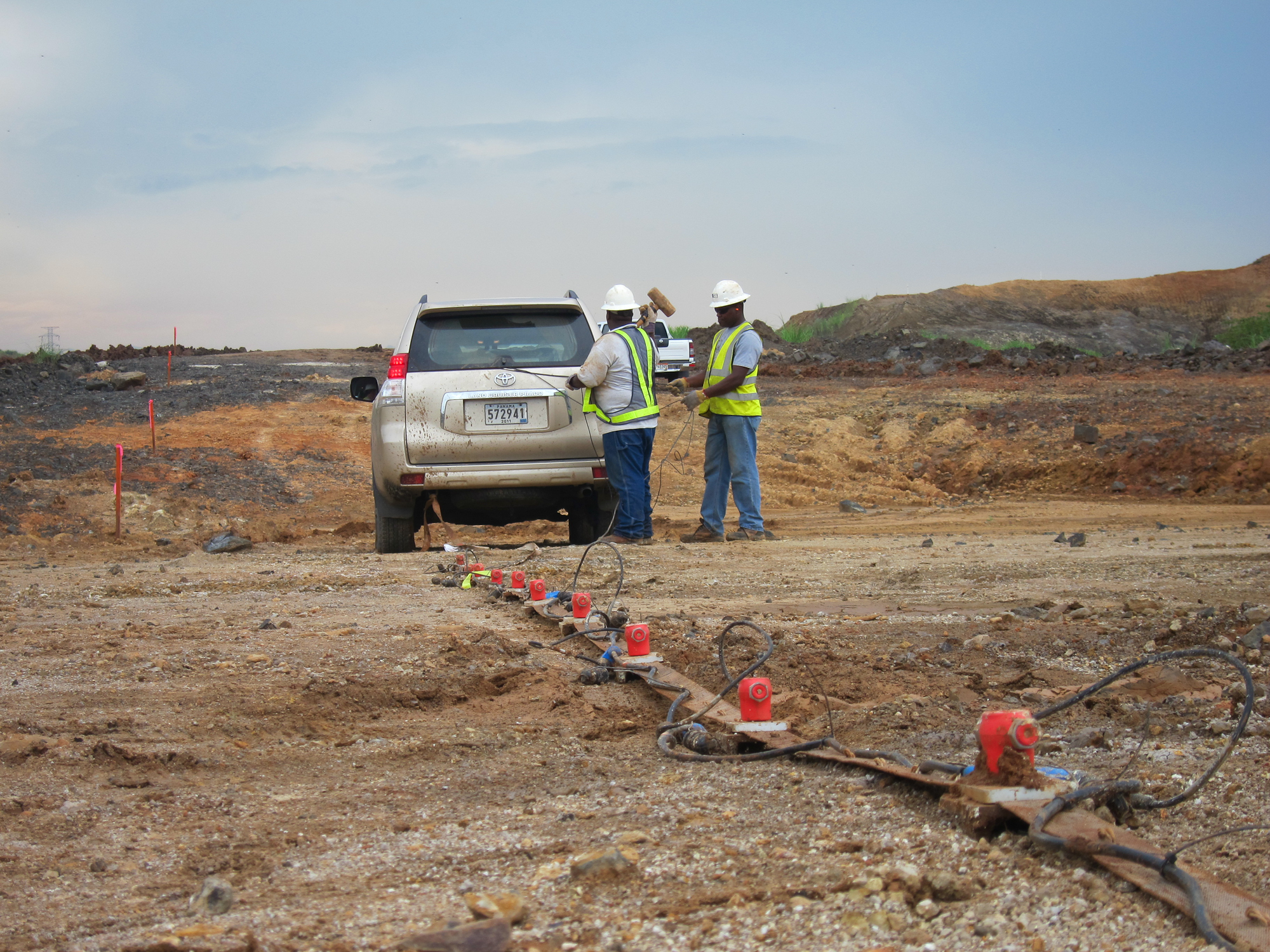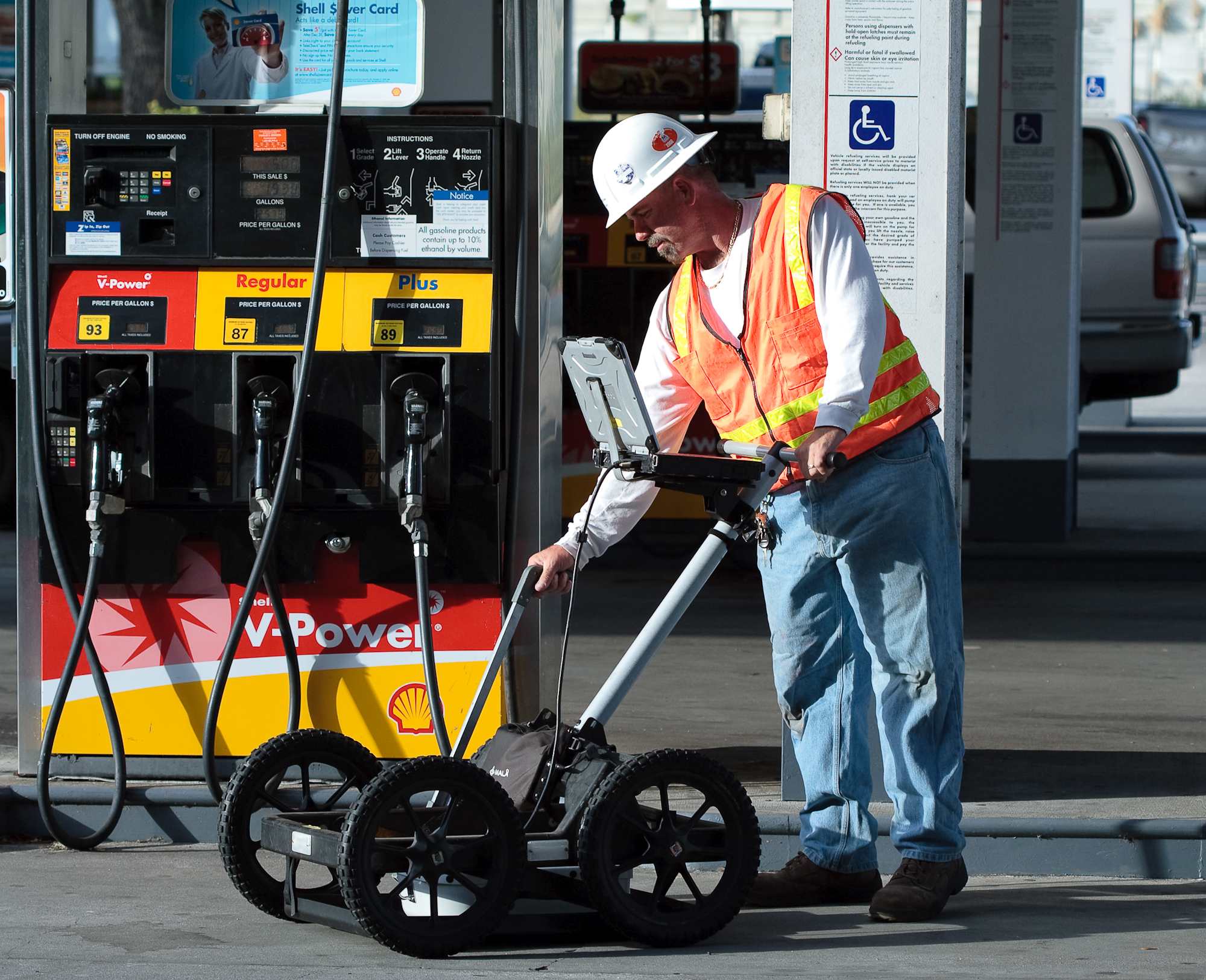Archaeological Services

The use of geophysics has become increasingly beneficial to archaeological surveys. A geophysical survey should not be used to replace an in-depth archeological survey conducted by a qualified professional archaeologist.  Instead, it should be used as one of many tools that can be applied to the investigation. Geophysics can be used to provide either a general site overview or a higher resolution image of a particular area of interest. This data helps direct future excavation efforts and additional archaeological work. The most common techniques used in archeological surveys are:
Instead, it should be used as one of many tools that can be applied to the investigation. Geophysics can be used to provide either a general site overview or a higher resolution image of a particular area of interest. This data helps direct future excavation efforts and additional archaeological work. The most common techniques used in archeological surveys are:
- Ground Penetrating Radar can be used to locate individual buried objects that have a different dielectric constant than the surrounding materials or to locate discontinuities in otherwise horizontal soil horizons created by excavation/trenching activities. The data can be either processed in 2-Dimensions to produce a cross section or 3-Dimensions to produce a series of plan view depth slices. GeoView has used GPR-Slice for 3-Dimensional GPR processing since 2005.
- Electrical Conductivity is used to locate localized changes in conductivity. These changes can be the results of buried metal, changes in soil/rock type, former excavation areas, or changes in moisture content. The data is typically presented as a plan view contour map of conductivity values. GeoView utilizes and owns Geonics EM-31, 34 and 38 conductivity meters for these types of studies.
- Magnetics is used to map localized changes in magnetic susceptibility. These changes can be due to natural geologic variations or due to buried ferrous metal, fire pits, buried clay pottery, stone walls and foundations. GeoView owns and uses a Geometrics cesium vapor magnetometer.
- Electrical Resistivity Imaging is used to map lateral and vertical changes in earth resistivity. It is typically used on large projects where the targets of interest may be buried up to tens of meters below overburden. GeoView owns and uses AGI R8 SuperSting 56 and 112 channel ERI systems.
- Metal Detectors are used to locate buried metal. GeoView owns and uses Geonics EM-61 MKII metal detectors for large scale surveys where data recording and depth of investigation (up to 3 meters) are critical. For small, shallow surveys, GeoView owns and uses MXT Pro metal detectors.
The successful implementation of geophysics to an archaeological survey depends on full teamwork between the archaeologist and the geophysicist, proper method selection and survey design, and a thorough understanding of both the benefits and limitations of each geophysical method. GeoView has worked with professional archaeologists to help locate:
- Individual gravesites
- Former cemeteries
- Pre-Colombian artifacts including metal, pottery, cooking pots, fire pits, gold ear and nose rings.
- 17th Century building foundations
- Civil War burials
- Historic lighthouse foundations
- Crime scene artifacts and burial areas
Example GPR Depth Slices Showing Multiple Graves and Utilities(click to enlarge)
Slice from 0 to 1 ft bls
Slice from 3 to 5ft bls









